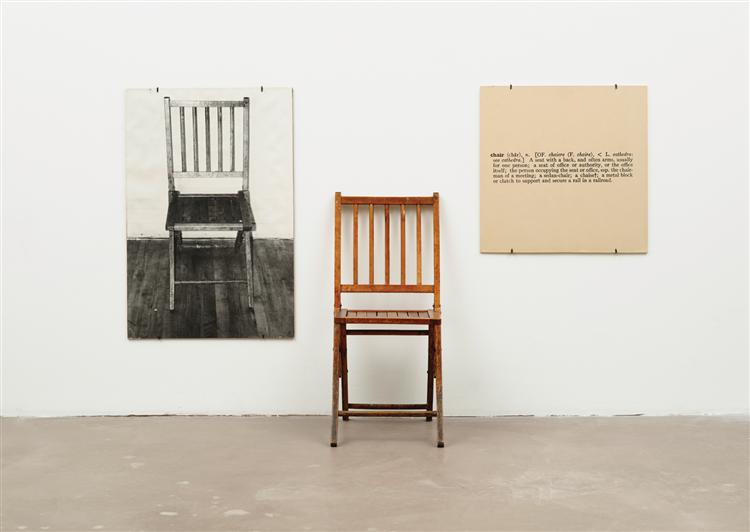Joseph Kosuth and Sol LeWitt
In many ways, the most radical of avant-garde art movements of the postwar era was Conceptual art, which reconsidered the very definition of what “art” is. Conceptual artists maintained that the “artfulness” of art lay in the artist’s idea, rather than in its final expression. These artists regarded the idea, or concept, as the defining component of the artwork. Indeed, in their effort to solve the problem of creating artworks that are ideas instead of tangible objects, some Conceptual artists do not create new objects at all.
One of the leading Conceptual artists and theorists was Joseph Kosuth (b. 1945). Kosuth’s work operates at the intersection of language and vision, dealing with the relationship between the abstract and the concrete. For example, in One and Three Chairs, Kosuth juxtaposed a real chair, a full-scale photograph of the same chair, and an enlarged reproduction of a dictionary definition of the word “chair.” By so doing, the Conceptual artist asked viewers to ponder the notion of what constitutes “chairness.”[1]

Sol LeWitt (1928-2007) worked as a Minimalist in the early 1960s. In 1967, LeWitt published what is considered a “manifesto” of Conceptual art – Paragraphs on Conceptual Art. He summed up his approach as follows: “When an artists uses a conceptual form of art, it means that all of the planning and decisions are made before hand and the execution is a perfunctory affair.” To this effect, LeWitt made a series of “wall drawings” for which he sold the instructions rather than the finished work. The first installation of Wall Drawing No. 681 C (similar to Wall Drawing #1084) was executed in 1993 at the National Gallery, Washington, D.C. The instructions are also a description of the work, which has enormous aesthetic appeal despite the artist’s insistence that the concept takes precedence over the final project.[2]

Visit the Met Museum to to learn how Sol LeWitt’s ideas are carried out in a museum.

